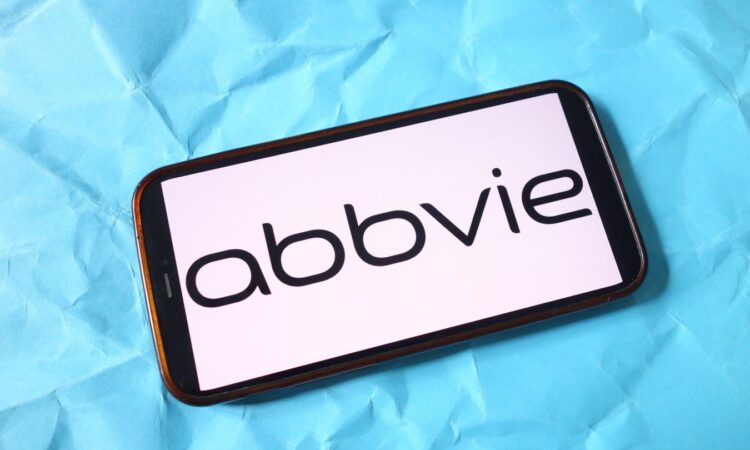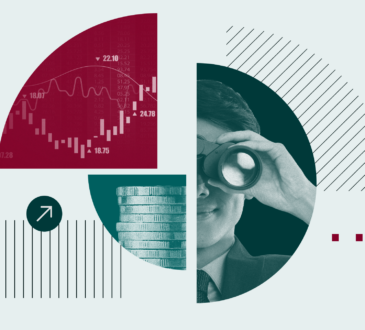
POLAND – 2025/09/07: In this photo illustration, the AbbVie company logo is seen displayed on a smartphone screen. (Photo Illustration by Piotr Swat/SOPA Images/LightRocket via Getty Images)
SOPA Images/LightRocket via Getty Images
AbbVie’s stock is on the rise, and for good reason! The company just reached a major agreement with generic drug manufacturers to delay the release of a generic version of its blockbuster drug, Rinvoq, until 2037. This is a huge deal because Rinvoq has been a powerhouse for the company, with sales reaching $6 billion last year and growing an impressive 50% year-over-year. In the first half of this year alone, it’s already pulled in $3.7 billion. This new settlement means Rinvoq will continue to dominate the market and could even hit peak sales of over $12 billion!
Now, you might be wondering if you’ve missed the boat, since ABBV stock is up 18% this year, trading at around $220 a share. We don’t think so. We believe ABBV is still a strong buy, even at its current price. The company has solid financials and operations, and its valuation isn’t as high as you might think. We’ll explore these factors in more detail below. That being said, if you seek an upside with less volatility than holding an individual stock, consider the High Quality Portfolio. It has comfortably outperformed its benchmark—a combination of the S&P 500, Russell, and S&P MidCap indexes—and has achieved returns exceeding 91% since its inception.
How Does AbbVie’s Valuation Look vs. The S&P 500?
Going by what you pay per dollar of sales or profit, ABBV stock looks slightly expensive compared to the broader market.
- AbbVie has a price-to-sales (P/S) ratio of 6.8 vs. a figure of 3.2 for the S&P 500
- Additionally, the company’s price-to-free cash flow (P/FCF) ratio is 21.6 compared to 21.2 for S&P 500
- And, it has a price-to-earnings (P/E) ratio of 104.8 vs. the benchmark’s 24.1
How Have AbbVie’s Revenues Grown Over Recent Years?
AbbVie’s Revenues have declined marginally over recent years.
- AbbVie has seen its top line grow at an average rate of 0.6% over the last 3 years (vs. an increase of 5.3% for the S&P 500)
- Its revenues have grown 6.1% from $55 Bil to $58 Bil in the last 12 months (vs. growth of 5.1% for the S&P 500)
- Also, its quarterly revenues grew 6.6% to $15 Bil in the most recent quarter from $14 Bil a year ago (vs. 6.1% improvement for S&P 500)
How Profitable Is AbbVie?
AbbVie’s profit margins are higher than most companies in the Trefis coverage universe.
- AbbVie’s Operating Income over the last four quarters was $14 Bil, which represents a high Operating Margin of 23.5% (vs. 18.6% for S&P 500)
- AbbVie’s Operating Cash Flow (OCF) over this period was $19 Bil, pointing to a considerably high OCF Margin of 33.1% (vs. 20.3% for the S&P 500)
- For the last four-quarter period, AbbVie’s Net Income was $3.8 Bil – indicating a poor Net Income Margin of 6.5% (vs. 12.6% for S&P 500)
Does AbbVie Look Financially Stable?
AbbVie’s balance sheet looks strong.
- AbbVie’s Debt figure was $70 Bil at the end of the most recent quarter, while its market capitalization is $374 Bil (as of 9/10/2025). This implies a very strong Debt-to-Equity Ratio of 17.9% (vs. 20.9% for S&P 500). [Note: A low Debt-to-Equity Ratio is desirable]
- Cash (including cash equivalents) makes up $6.5 Bil of the $137 Bil in Total Assets for AbbVie. This yields a poor Cash-to-Assets Ratio of 4.7% (vs. 7.0% for S&P 500)
How Resilient Is ABBV Stock During A Downturn?
ABBV stock has seen an impact that was slightly better than the benchmark S&P 500 index during some of the recent downturns. While investors have their fingers crossed for a soft landing by the U.S. economy, how bad can things get if there is another recession? Our dashboard How Low Can Stocks Go During A Market Crash captures how key stocks fared during and after the last six market crashes.
Inflation Shock (2022)
- ABBV stock fell 23.3% from a high of $174.96 on 8 April 2022 to $134.21 on 30 September 2022, vs. a peak-to-trough decline of 25.4% for the S&P 500
- The stock fully recovered to its pre-Crisis peak by 7 February 2024
- Since then, the stock has increased to a high of $216.66 on 10 March 2025 and currently trades at around $210
COVID-19 Pandemic (2020)
- ABBV stock fell 34.0% from a high of $97.79 on 12 February 2020 to $64.50 on 23 March 2020, vs. a peak-to-trough decline of 33.9% for the S&P 500
- The stock fully recovered to its pre-Crisis peak by 30 June 2020
Putting All The Pieces Together: What It Means For ABBV Stock
In summary, AbbVie’s performance across the parameters detailed above are as follows:
- Growth: Moderate
- Profitability: Strong
- Financial Stability: Strong
- Downturn Resilience: Strong
- Overall: Strong
Even with AbbVie’s stock trading higher, its valuation remains reasonable compared to the broader market. The recent news about Rinvoq should create positive momentum and reassure investors.
Indeed, AbbVie’s stock is currently trading at 6.7 times trailing revenue, which is higher than its three-year average of 5 times. However, this increase is justified. The company successfully navigated a significant drop in sales after its blockbuster drug Humira lost patent exclusivity, largely due to the strength of its new drugs, Rinvoq and Skyrizi.
While, of course, our assessment could be wrong and you may not be comfortable paying nearly seven times revenue for a company with 6% revenue growth, we believe AbbVie is still a solid long-term investment. If you have a three-to-five-year investment horizon, the stock looks like a strong buy, even at its current price.
While there may be more upside to ABBV stock, you can explore a more diversified portfolio – the Trefis Reinforced Value (RV) Portfolio – which has outperformed its all-cap stocks benchmark (combination of the S&P 500, S&P mid-cap, and Russell 2000 benchmark indices) to produce strong returns for investors. Why is that? The quarterly rebalanced mix of large, mid, and small-cap RV Portfolio stocks provided a responsive way to make the most of upbeat market conditions while limiting losses when markets head south, as detailed in RV Portfolio performance metrics.


